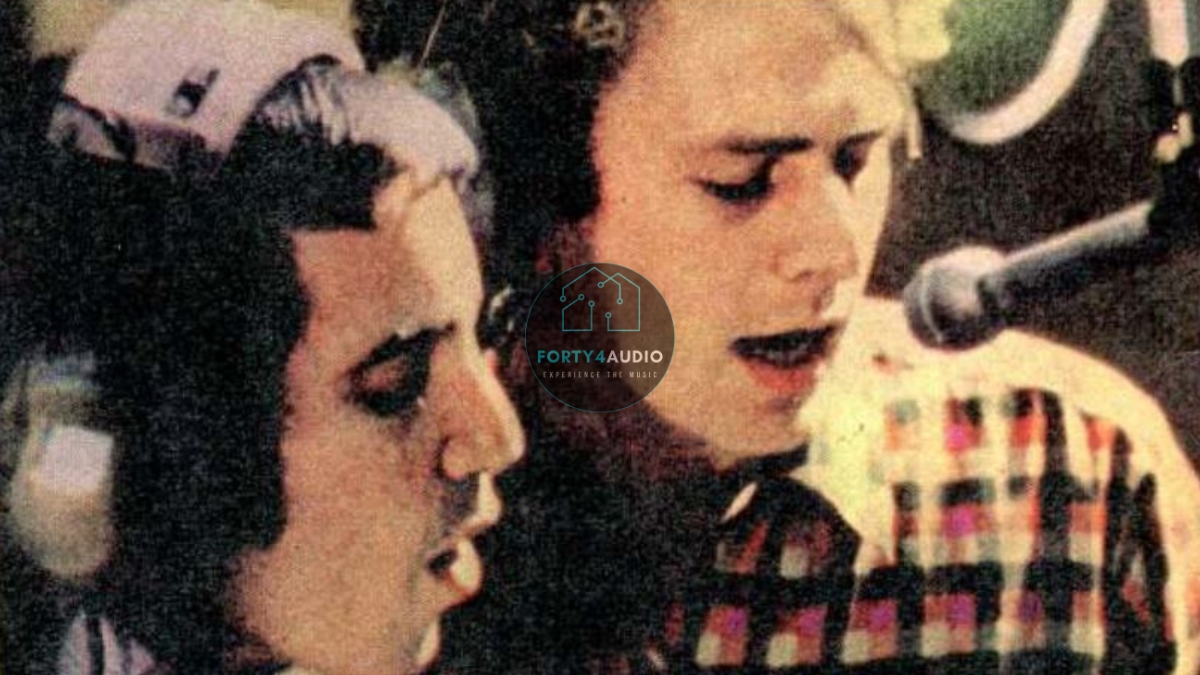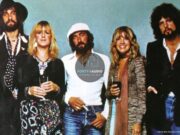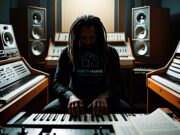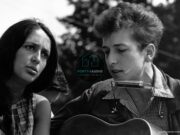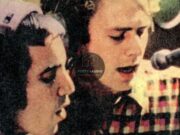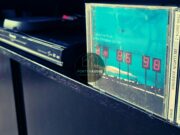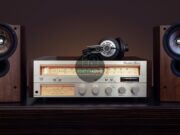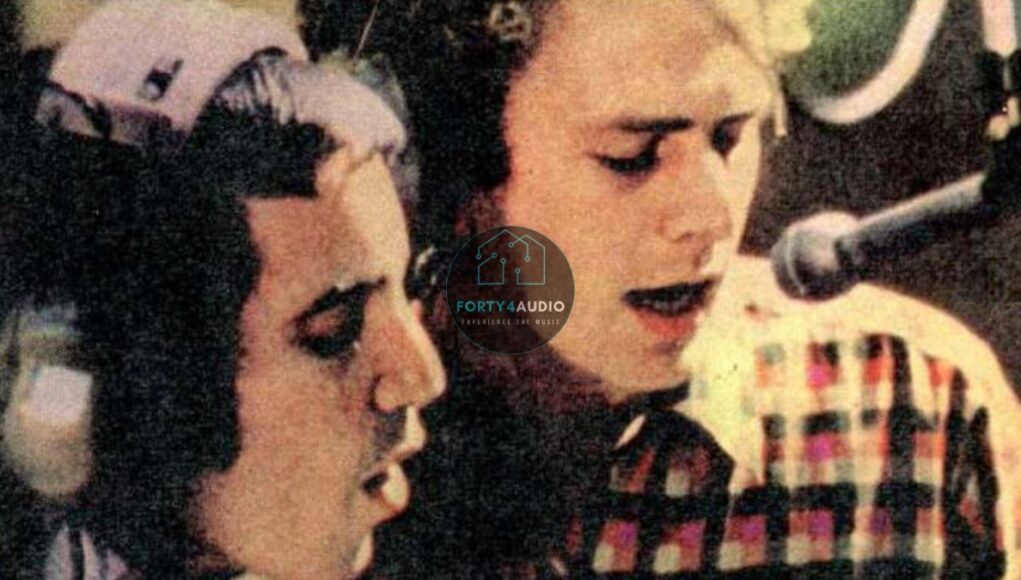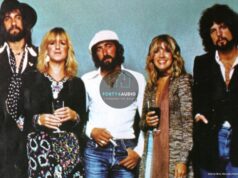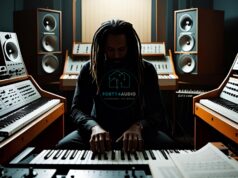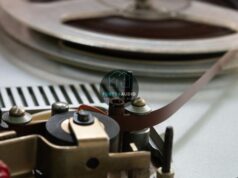When a Song Became a Promise
There are moments in music history when a single song transcends the charts and becomes something larger – a reassurance, a shared sigh, a promise whispered across generations. Bridge over Troubled Water by Simon & Garfunkel is one of those rare moments. Released in January 1970, it emerged at the tail end of a turbulent decade when the world was wrestling with war, protest, and profound change.
For millions, it wasn’t just a pop hit – it was solace. The song’s gospel warmth and sweeping orchestration gave listeners something deeply human: comfort through connection. And more than fifty years later, that promise still feels alive.
What’s remarkable, though, is that this emotional masterpiece was nearly left off the album in its final form. Paul Simon once thought it might be “too slow” for radio. Yet within months, Bridge over Troubled Water became one of the most awarded and covered songs in recording history – the very sound of compassion set to melody.
The Inspiration Behind Troubled Waters
Every great song begins as a spark. For Paul Simon, that spark came from a voice that had once filled the pews of Black gospel churches. While listening to an old recording of “Oh Mary Don’t You Weep” by the Swan Silvertones, he was struck by a particular lyric: “I’ll be your bridge over deep water if you trust in my name.” That single phrase lingered – a poetic image of faith and care that felt universal.
Simon carried that line into his own songwriting process. At first, he envisioned Bridge over Troubled Water as a simple gospel-inspired piano tune – something gentle, reflective, almost hymn-like. But as the sessions evolved, it became something far grander: a cinematic anthem of empathy.
Few know that Simon’s earliest drafts were only two verses long. The final verse – the one that carries the line “Sail on silver girl” – came later, inspired by his then-wife Peggy Harper, who was anxious about finding her first gray hairs. Simon wrote it as a message of reassurance. The “silver girl” wasn’t symbolic or mysterious – it was personal, tender, and very real.
The Making of an Emotional Epic
Recording began in August 1969 at Columbia Studios in Los Angeles. Producer Roy Halee, who had already worked with Simon & Garfunkel on their earlier albums, wanted the record to feel larger than life – the kind of sound that would fill a cathedral but still feel intimate enough to whisper in your ear.
The first challenge was the piano. Halee and Simon wanted something that felt “liquid” and resonant, almost as if it floated on air. Enter Larry Knechtel, one of the legendary session players from The Wrecking Crew. His performance – a fusion of gospel phrasing and classical restraint – became the song’s heartbeat. Halee then engineered a unique echo chamber effect that gave the piano its signature spacious sound, recording the reverb separately in another room to create depth no single microphone could capture.
Paul Simon had originally written Bridge over Troubled Water for his own voice. But as the arrangement grew in scope, he realized the song demanded something ethereal. Art Garfunkel‘s angelic tenor, already a defining feature of their sound, could lift the track into another emotional realm. In a humble and decisive move, Simon handed his own creation to his partner – a decision that both united and divided the duo.
Garfunkel later recorded the lead in just a few takes. The performance, now iconic, carries a natural rise and fall that feels effortless. But behind that calm delivery was painstaking production: multiple overdubs, orchestral layers, and a subtle bass drum played through a church-style echo chamber. Halee even captured part of the final mix through Columbia’s stairwell to achieve a “cathedral reverb.” Few pop records of the era were engineered with such intention.
The Gospel, the Grandeur, and the Gamble
At its core, Bridge over Troubled Water is a gospel song disguised as a pop ballad. Its chord structure borrows from traditional hymns, while its dynamics mimic a church service – quiet reflection building into collective release. Yet what made it revolutionary was how those gospel roots were translated for mainstream audiences without losing authenticity.
In the late 1960s, most pop singles clocked in under three minutes. Bridge over Troubled Water ran over four and a half. Columbia Records hesitated to release it as a single, believing radio wouldn’t play something so long and so solemn. But Garfunkel insisted. The gamble paid off. Within weeks, the song hit #1 on the Billboard Hot 100 and stayed there for six weeks. It went on to win five Grammy Awards in 1971, including Record of the Year and Song of the Year, making Simon & Garfunkel household names worldwide.
What few realize is that this single song also marked the end of the duo’s collaboration. During its creation, Simon and Garfunkel’s creative partnership was fraying. Garfunkel was increasingly involved in film work, while Simon felt overshadowed in the public eye. The haunting beauty of Bridge over Troubled Water became their unintended farewell – a final bridge before parting ways.
The Hidden Layers of a Farewell
The Bridge over Troubled Water album, released January 26, 1970, carried the same name as its defining song and mirrored the duo’s tension and brilliance. Tracks like “The Boxer,” “Cecilia,” and “The Only Living Boy in New York” were each reflections of transition – balancing nostalgia with the inevitability of change.
Simon later admitted that giving Garfunkel the lead vocal on Bridge left him conflicted. On one hand, he admired the purity of Art’s voice; on the other, he felt a sense of loss – as if he had handed away part of his soul. Yet that emotional honesty may be why the song endures. It’s built on generosity and vulnerability, not ego.
Interestingly, the track nearly lost its final verse during editing. Some felt it slowed the song’s momentum. But Garfunkel argued that the “Sail on silver girl” section completed the emotional arc – from reassurance to renewal. Without it, the song’s narrative would have remained unresolved. His instinct proved right. That final swell transforms the piece from comfort into transcendence.
During the mastering session, Halee boosted the orchestral frequencies ever so slightly to make the song’s climax shimmer. That subtle adjustment, combined with the layered percussion and strings, is part of what gives Bridge over Troubled Water its cinematic lift – a moment when the sound feels larger than emotion itself.
The Covers That Carried It Forward
Great songs are measured by how they live beyond their creators. Bridge over Troubled Water has been recorded by more than 400 artists – a staggering legacy. Aretha Franklin’s 1971 version transformed it into a gospel revival, earning her another Grammy and making her interpretation nearly as beloved as the original. Elvis Presley’s cover, performed during his Las Vegas era, brought a raw spiritual energy, while Johnny Cash’s take turned the lyrics into a prayer of redemption.
In the 1980s, artists from Linda Clifford to Roberta Flack reimagined the song for their own generations. Even modern performances – from Andrea Bocelli to Josh Groban – continue to reintroduce it to new listeners. Each version highlights something different: faith, resilience, or quiet love. And that’s the genius of Simon’s writing – it leaves space for every listener to find their own reflection in the troubled waters.
The Voice That Became the Bridge
Art Garfunkel‘s performance on Bridge over Troubled Water is often described as effortless, but it’s anything but simple. His vocal range, clarity, and emotional restraint created a delivery that feels timeless. The recording captures what producers often chase but rarely achieve – vulnerability without fragility.
When Garfunkel steps into the first line, “When you’re weary, feeling small,” his tone is almost conversational. There’s no rush to prove anything; every syllable lands with purpose. By the time he reaches the crescendo, “Like a bridge over troubled water, I will lay me down,” the shift from comfort to conviction feels like a promise kept.
For vocalists, this performance is a masterclass in control. Garfunkel doesn’t belt; he sustains. He doesn’t plead; he affirms. It’s this emotional discipline that allows the listener to project their own experience into the song. The result is universal empathy – music as human connection.
Interestingly, Simon once mentioned that Garfunkel was hesitant to record the song initially, suggesting that Paul should sing it himself. It took Simon’s insistence – and Garfunkel’s humility – to realize what each could bring to it. That creative trust became the heart of the song’s power. In an era when many acts were defined by ego and showmanship, Simon & Garfunkel delivered something rarer: surrender in service of the music.
Why Bridge over Troubled Water Still Resonates
Half a century later, Bridge over Troubled Water continues to find new meaning. Its message of compassion and reassurance feels timeless because it was never tied to a specific event or ideology. Instead, it speaks to something universal – the idea of being someone’s calm when the world grows heavy.
The song has resurfaced in countless moments of collective grief and hope. It was played after national tragedies, performed at memorials, and used in charity broadcasts from Live Aid to modern humanitarian telethons. When Garfunkel performed it at the 9/11 benefit concert, the audience reaction confirmed what the duo had built decades before: a musical sanctuary.
What’s striking is how the song adapts to each era without losing meaning. Its strength lies in its simplicity. Three verses, one steady rhythm, and a vocal line that carries both sorrow and salvation. For music producers and songwriters, it’s a reminder that technical brilliance serves the heart – not the other way around.
Paul Simon himself has often reflected on the song’s longevity. He’s called it both “a gift” and “a weight.” He knew early on that he might never write another song as beloved, and yet he continued to evolve creatively for decades. That tension – between gratitude and artistic restlessness – mirrors the song’s emotional duality: peace found through struggle.
The Song as Cultural Memory
When a piece of music outlives its moment, it becomes part of the shared cultural memory. Bridge over Troubled Water is an emotional landmark. It has been used in political campaigns, religious services, film soundtracks, and public ceremonies. Its universality allows it to transcend genre, language, and generation.
In the United Kingdom, the song became a chart mainstay, even reappearing during the 1980s through cover versions. In the United States, it became a rite of passage for gospel choirs and vocal students. And around the world, from South Africa to South America, it has been translated and performed in local languages – each time reshaped to reflect the community’s own sense of endurance.
Few realize that when Simon & Garfunkel reunited in 1981 for their Concert in Central Park, the performance of Bridge over Troubled Water drew one of the loudest ovations of the night. Nearly half a million people stood in silence and then erupted in applause as Garfunkel’s final line faded. The recording from that evening still carries the energy of unity – the same emotion that fueled its creation more than a decade earlier.
The Production Secrets That Built a Classic
For the producers, engineers, and audiophiles who make up a large part of the forty4 Audio community, Bridge over Troubled Water remains an engineering marvel. Roy Halee‘s recording approach set new standards for dynamic range and stereo depth in 1970. He layered multiple takes of piano and strings, then blended them through Columbia’s customized echo chambers to achieve that expansive, cathedral-like effect.
The bass drum that enters in the second verse wasn’t recorded in the main studio at all. It was placed in a stairwell, mic’d from two floors above to achieve the deep resonance that subtly grounds the track. These kinds of physical acoustics – manipulating space rather than relying solely on post-production – gave the song an organic realism that modern digital methods often struggle to replicate.
When heard on a high-fidelity setup, the mix reveals layers that are easy to miss on standard speakers. You can hear the resonance of the piano strings, the subtle air in Garfunkel’s phrasing, the way the reverb decays unevenly between channels. It’s a masterclass in analog warmth – one reason why collectors and audiophiles still seek out the original Columbia vinyl pressing.
The Song That Shaped Modern Ballads
The influence of Bridge over Troubled Water on modern music is difficult to overstate. It set a template for emotionally charged pop ballads – from Elton John‘s “Your Song” to Adele‘s “Someone Like You.” Each borrows something from Simon’s structure: simplicity, sincerity, and gradual build.
But what made Bridge revolutionary was its emotional pacing. The arrangement starts with absolute stillness, inviting the listener inward, then expands to full orchestral splendor before settling back into calm. It’s a sonic metaphor for the very idea of being a bridge – carrying someone through their turmoil and setting them gently on the other side.
Musicians studying its structure often point out that it uses only a few chords, but the emotional journey feels vast. That’s the genius of restraint. Simon and Halee left silence where others might have filled space. Those quiet gaps between phrases give the listener time to breathe – and that breathing room is what makes the emotion believable.
Lessons from the Bridge
For songwriters, producers, and devoted listeners, Bridge over Troubled Water offers several lessons that go beyond theory.
First, sincerity outweighs complexity. The lyrics aren’t ornate; they’re human. Lines like “I will lay me down” convey devotion more deeply than any metaphor could.
Second, collaboration matters. Paul Simon‘s authorship and Garfunkel’s interpretation remind us that music often thrives when ego steps aside. It’s in the balance of vision and voice that art becomes enduring.
Third, timeless sound depends on timeless care. The analog techniques, live instrumentation, and deliberate pacing all contribute to the song’s longevity. Even in an age of digital perfection, it’s the imperfections – the breath, the slight swell, the natural decay – that give it life.
And finally, the song’s message remains relevant. Every listener, at some point, becomes both the one crossing and the one building the bridge. It’s a reminder that empathy, like music, carries forward through connection.
Continuing the Journey through Music and Memory
At forty4 Audio, we believe that great music doesn’t end when the song stops playing – it echoes through memory, emotion, and shared experience. Bridge over Troubled Water embodies that truth more than almost any track in modern history. It reminds us that sound can heal, that production can feel human, and that a single voice can carry a generation through its hardest moments.
If you’ve never listened to this song through a true high-fidelity system, consider making that your next moment of discovery. Turn off the distractions, dim the lights, and let the first piano notes roll in like a tide. Hear how each layer – from Knechtel’s piano to Garfunkel’s soaring final line – tells its own story within the whole.
Then, keep exploring. Revisit the songs that shaped your own bridges. At forty4 Audio, we invite you to continue the journey – to experience music as something more than sound. It’s a memory waiting to be felt again.
Join the forty4 Audio community and rediscover how timeless music connects the past to the present – and the listener to the art. Because music isn’t sound alone; it’s a bridge that carries us all.
